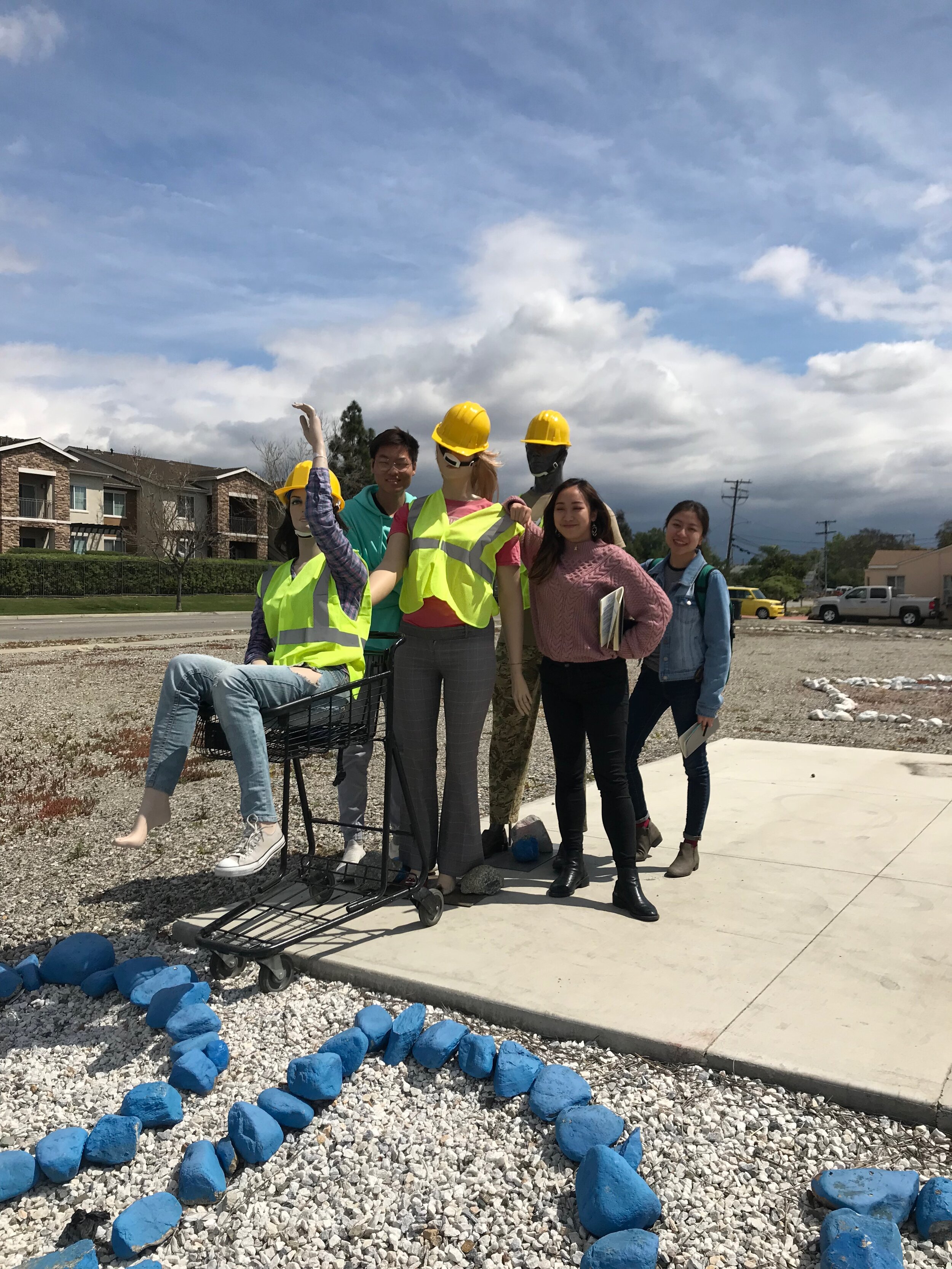
Background
In the spring of 2019, for our second and final group project in E180: Human-centered Design, we were asked to rethink and redesign the emergency preparedness, response, or recovery experience in collaboration with Field Innovation Team (FIT). Our group chose to redesign the emergency preparedness experience, and started off by visiting and observing a disaster preparation store (whose mannequins are pictured above) called “Prep and Save” in Claremont, CA.
Goals of Research
• Immerse ourselves in an analogous environment to gain insight on a user’s point-of-view.
• Explore different kinds of emergencies and how a user might prepare for one.
• Create a few user persona profiles and choose one to solve for.
• Propose a solution that addresses this user’s pain points and improves their experience of emergency preparedness.
Role
Experience Designer and User Researcher
Duration
6 weeks (class project)
Type
Process Redesign
USER PERSONA PROFILE
After building four user personas from our interviews, we chose one to solve for:
• A college senior who worries constantly about his parent’s finances, on top of worrying about his own.
• His parents do not save money for financial emergencies or retirement, and their family has already been through two unseen and hugely impactful financial emergencies. His father recently lost his job. His parents have stopped saving and have a cavalier attitude towards spending money.
• He constantly feels pressure to save money to provide for them, and feels that their financial irresponsibility weighs disproportionately on him, because he is going into a more financially lucrative career than his twin sister.
KEY INSIGHTS
• Preparing for an emergency can mean preparing for a financial one (like a parent, who is the main source of income in the family, losing their job), not just a natural disaster.
• As a soon-to-be college graduate going into consulting, our user feels that his parents expect his to get a high-paying job in order to be a solution to their own financial mistakes.
• The most important thing for our user is to ease the anxiety of constantly thinking about finances, not solve his parents’ problems. Our user, currently, is obsessed with saving money, and spends all his free time thinking of how to contribute to his own emergency fund, reading personal finance blogs, and choosing certain job opportunities over others for the salary, not the emotional fulfillment of the work.
• There’s a mismatch between the parents and the child: a pair of irresponsible and cavalier parents raised a very responsible, bright, driven child, and there’s a tension between the two. The more responsible the child is, and the more they care about their parents, the more tension there is.
PROJECT SOLUTION
We came down to two ideas that we wanted to explore: an experience that conveys the feelings of each stakeholder (student, sibling, parents), followed by a debriefing booklet and call-to-action activity between the parents and students, or a board game where people could play as the different stakeholders and live out their respective stakeholder’s experience in the entire situation. We briefly tested game show-style idea on our extreme user, but he didn’t have too much feedback, other than to say that it was good and that he liked it. We didn’t get the chance to test it on any parents. We also tested it on our professor as well as another student from the class. They both said that we should emphasize the emotional effects of each choice more during the games.
• This lead us to combine two ideas and create a game where people could experience the roles of each stakeholder in the situation as well as having a debriefing and call-to-action activity. We called this game “What Would You Do?” and structured it as a couple of scenarios where players could elect one of two choices to move forward, resulting in a solution that helped them financially prepare for a range of emergencies.
• Based on feedback, we decided to mainly focus on the game itself during the presentation of the experience for the class, because our main goal was to emphasize the anguish and stress that our extreme user feels under the pressure to succeed in order to take care of his parents. This is something that we would advise FIT to focus on more -- financial emergency preparedness and how to approach discussing it with one’s family.









